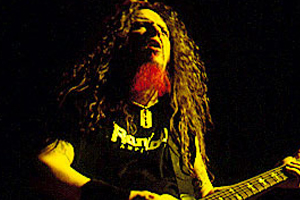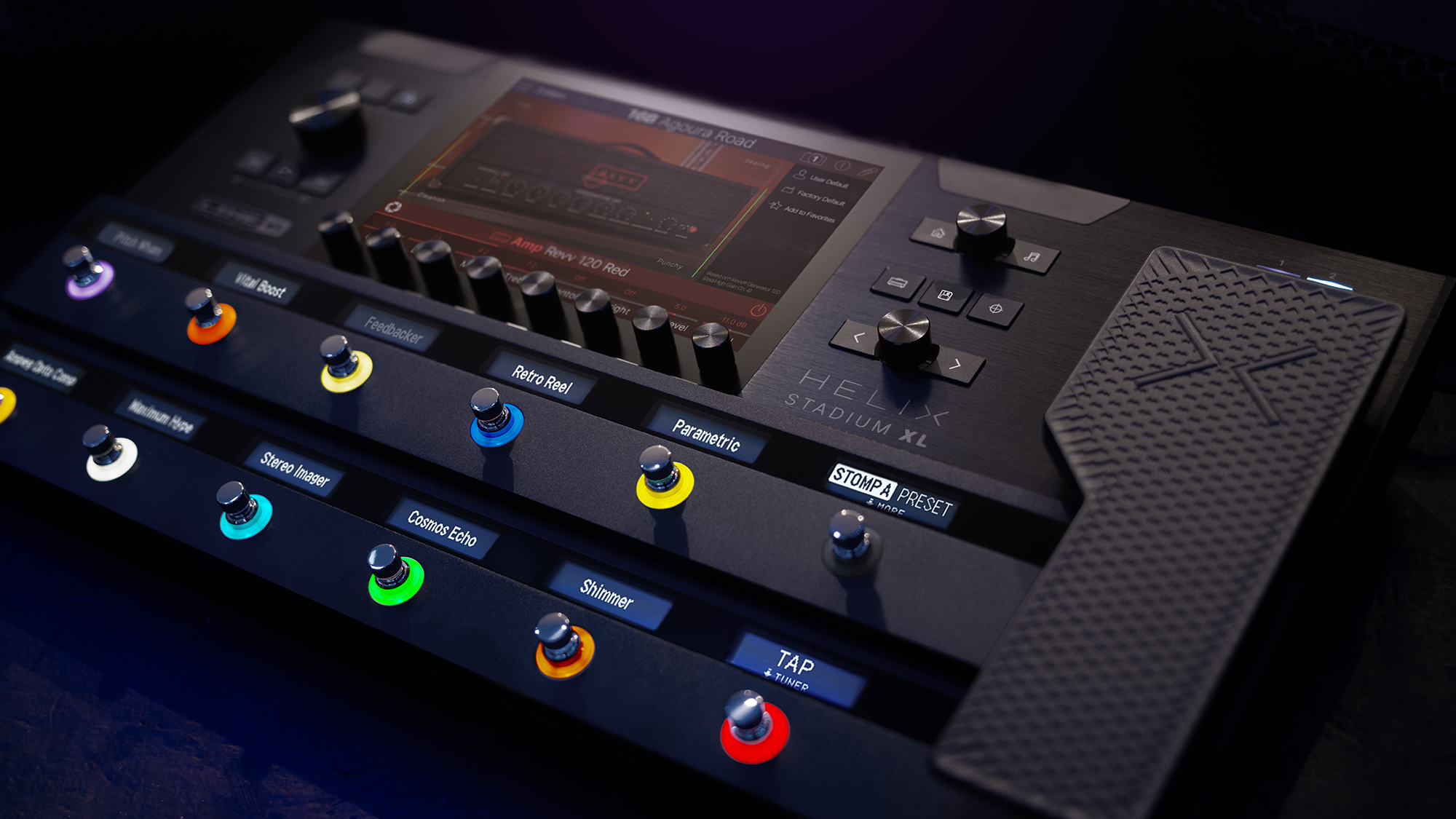Dimebag Darrell: Knock-Out Riffs

This entry comes from Dimebag Darrell's classic Guitar World column, "Riffer Madness" To me and my band, guitar riffs are what it's all about. We know that every time we jam on a great riff we've got a fighting chance of writing a great song! You don't have to go to G.l.T. or know a bunch of weird-assed chords and scales to come up with killer shit. But you've got to be totally into what you're doing! Check out Judas Priest's British Steel album if you don't believe me. It's packed full of god-like riffs, and most of them aren't hard to play. If you don't already own this album, buy it-it's essential shit, man! Anyway, here's a couple of ideas that might help you make the most of a good, heavy riff. One of our audience's favorite riffs is the main one in our encore, "Cowboys From Hell" (Cowboys From Hell, Atco). It's a pretty easy riff to play 'cause it's made of the first rock scale we all learn-the E minor blues scale (Figures la and lb.) The first time you hear this riff is in the song's intro where I play it an octave higher than I do during the rest of the track.(Figure 2.) Hearing it played an octave higher is like an appetizer-it introduces you to the riff and makes you hungry for more! Playing it higher first also makes the full-blown unsion (Figure 3) sound real heavy when it kicks in. I guess you could say that FIGURE 2 is the "body blow" and FIGURE 3 is the "knockout punch." My bud Jerry Cantrell from Alice In Chains does the same sort of thing on "Would?" He starts off by playing the verse riff high up the neck, then slams you in the teeth when the vocals enter by playing it an octave lower. To give the main "Cowboys" riff (Figure 3) even more balls, I play power chords on the E and A notes instead of just playing single notes like I do in the intro version (Figure 2). 1 also add some low-end chunk by applying some heavy-duty palm muting. My whammy system is set up so I can yank the bar up as well as do dive-bombs with it. This means that if I accidentally push down on the bridge with my palm, my strings go sharp and sound out of tune. I make sure this never happens by never resting my hand on the bridge when muting. I always do my muting just in front of the bridge. I also use the idea of repeating a riff in different octaves during the bridge of "Cowboys" (Figure 4a). There's a short, one-bar descending run I play twice halfway through the bridge (bar 4). At the end (bar 8)(Figure 4b), I play the same run an octave higher. This definitely makes the bridge sound cooler than if I just played the run in the same register twice. GET A GRIP When I play live, I jump around like an idiot for an hour-and-a-half or more under a lighting rig that's hotter than hell. This makes me sweat like a pig, and makes it real tough for me to keep a firm grip on my picks, even those that are supposed to be non-slip. Losing control of your pick on stage sucks, so I scratch some deep X's into both sides of my pick with something sharp, like a dart. Doing this makes your picks look like shit-but at least you won't look like an asshole because you dropped one in the middle of a solo! The "Dimebag Darrell Riffer Madness" DVD is available through Alfred here.
All the latest guitar news, interviews, lessons, reviews, deals and more, direct to your inbox!
